Did you know that articulated robots have completely revolutionized multi-axis industrial automation, turning classic assembly lines into futuristic smart factories? Welcome to the dawn of hyper-efficient manufacturing, where the old rules no longer apply!
As industries race ahead in technology adoption, the importance of leveraging articulated robots has skyrocketed. Their capability to master complex tasks with precision is critical in today's productivity-driven market. Missing out isn’t an option!
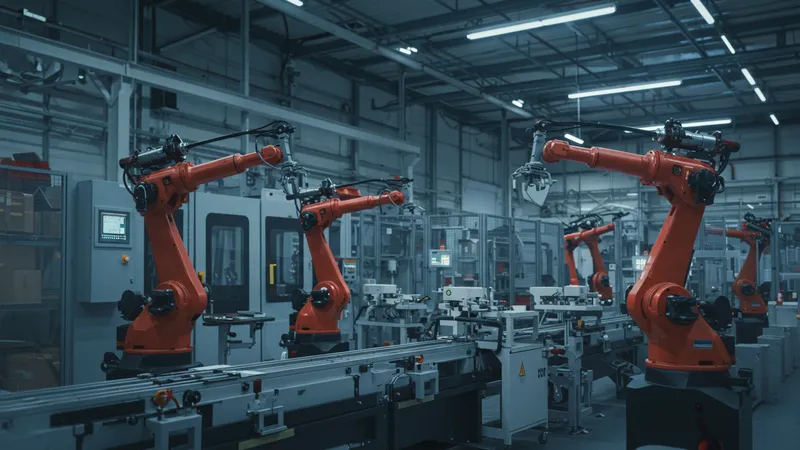
What's genuinely captivating about these robotic innovations? It's the mind-boggling ability of articulated robots to mimic human motion with unparalleled accuracy. Picture a machine executing tasks with seamless dexterity, flipping, and twisting as if it had been working on assembly lines forever! But that’s not even the wildest part…
These marvels don’t just excel in repetition; they adapt in real-time, paving the way towards next-gen automation. Forget constraints; we’re talking about robots capable of decision-making based on environmental feedback, elevating efficiency to unprecedented levels. What unfolds next is a game-changer, even for seasoned experts…
When picturing traditional factories, the buzzing, overworked imagery might come to mind. But articulated robots have dramatically altered this visual landscape. They aren't just making processes faster—they're making them smarter. Equipped with advanced sensors, these robots can sense their surroundings in incredible detail, optimizing processes while reducing human intervention.
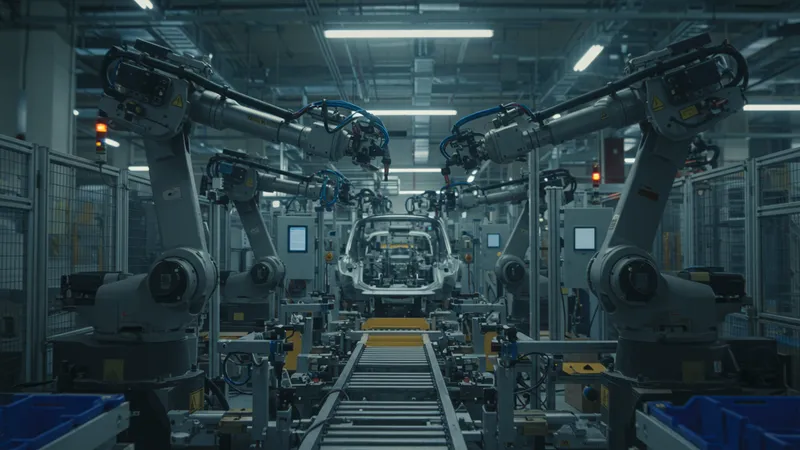
Their impact has been remarkable. For instance, in the automotive industry, production lines have shaved off hours from production cycles. Factories utilizing these robots report up to a 30% increase in productivity. It seems almost unbelievable, but there’s a twist to this story that isn't widely known…
Yes, articulated robots think—or rather, they process. Their embedded AI capabilities allow them to troubleshoot issues in real-time without halting production. Imagine: a glitch appears, but before it even escalates, the robot adjusts its actions instantly. It's like having a workforce that never tires, never errs, and always learns. What you read next might change how you see this forever.
But why is there such secrecy around their development? Companies guard these innovations fiercely, not just because of the competitive advantage but due to the rapid changes they enforce on traditional business models. Stay with us as we dissect the underlying techno-secrets that redefine possibilities…
Imagine a factory floor bustling with humans replaced almost entirely by machines that far outperform them in speed and precision. The shift is happening, and increasingly, big corporations are heralding a new era dominated by articulated robots. Why this change, you wonder? Here's the secret: cost-effectiveness.

At first, the price tag of deploying articulated robots may seem daunting. However, the long-term savings are astonishing. With robots handling mundane and repetitive tasks, human labor can be channeled into more strategic roles. Many factories report up to 25% reduction in operational costs. Yet, there's a flip side that not many see coming…
As automation tightens its grip, dependency on human intervention declines, pitching economic questions about labor market shifts. Are we prepared for an impending paradigm where manual labor could become obsolete in certain industries? While the advantages are significant, the social implications add a complex layer to this technological triumph.
This transition could potentially trigger socio-economic shifts. With automated robots performing human chores, a delicate dance between technology and employment unfolds. What's on the horizon may surprise many, but it's an evolution we can’t ignore. The next page will uncover startling strategies industries are adopting to balance this change…
In a world advancing at breakneck speed, ‘Adapt or Perish’ seems to be the mantra echoing in industrial corridors today. The uptake of articulated robots is more than a trend; it’s a revolution. Businesses faced with the choice of adopting this technology or risking obsolescence are choosing progress over peril.
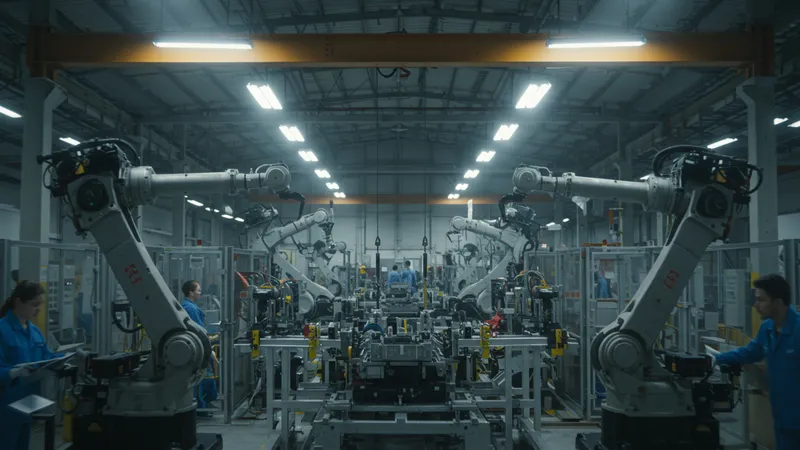
What's driving this urgent change? Apart from cost savings, it's the consistent performance and reliability these robots bring to the table. Unlike human workers, articulated robots don't tire, require breaks, or show discrepancies in performance due to mood or health. This invaluable consistency is reshaping industry expectations.
That said, are traditional industries ready to embrace this rapid transformation? The irony lies in the fact that while many acknowledge the need for change, few are truly prepared for it. The pace of technological development often surpasses planning, leaving businesses scrambling to keep up. What lies beneath this shift is a preparedness many are yet to achieve.
The next wave might shock you: training algorithms that empower robots to learn and adapt to new tasks instantaneously. It’s not just about replacing human jobs; it’s about redefining what skilled labor means. Understanding this is crucial, as the next insight will reveal strategies to future-proof industries against the unknowns…
Picture this: a robot designed not just to perform set tasks but to evolve, learning new skills as it progresses. This isn't science fiction—it’s the reality in today’s cutting-edge factories. At the heart of this capability is sophisticated machine learning algorithms enabling robots to become more adept and versatile.
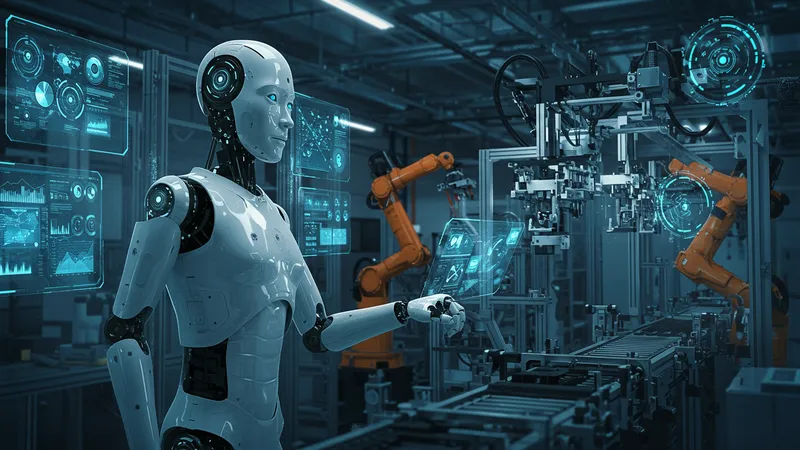
These learning bots can now adjust their operations based on real-time data. Imagine a robot adapting to a sudden production change mid-operation, seamlessly rerouting its processes without halting. It’s akin to giving machines a brain, making them invaluable assets in agile and dynamic manufacturing environments.
How is this achieved? With vast datasets fed into AI models, robots learn not just from pre-set instructions but from every task they undertake. Each action becomes a lesson, expanding their repertoire. This advancement sounds groundbreaking, but what it hints at is even more intriguing: the dawn of self-improving machines. But what are the consequences?
This technological leap offers significant competitive advantages but also raises ethical and operational challenges. Could machines outpace their creators? The possibilities advocate for a deeper understanding and regulation, posing questions we are still navigating. Dive deeper with us as we uncover the potential and pitfalls of this evolution…
As we venture deeper into the age of robotic automation, ethical considerations demand our attention. While articulated robots promise to reshape industries with efficiency and innovation, they also prompt questions about the human cost. Let’s peel back the layers of dilemmas this technology presents.
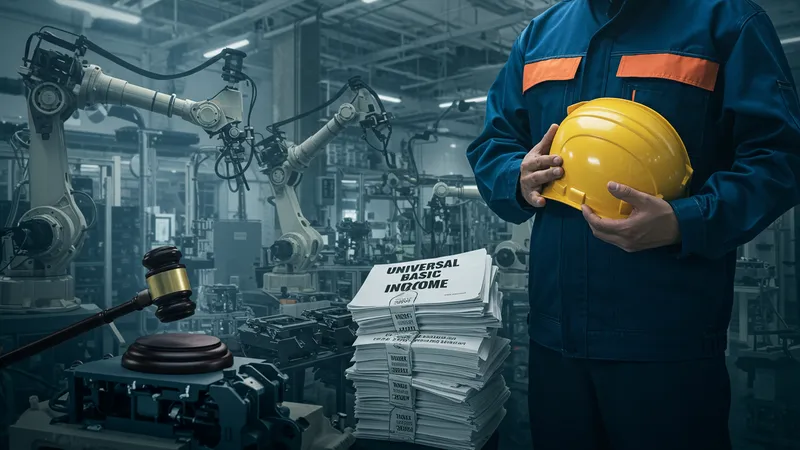
With robots taking over routine jobs, there’s a growing concern about unemployment. Lawyers and policymakers are in a race to address these fears, pondering over concepts like universal basic income to combat job displacement. Yet, this solution is far from simple and might shock traditional economic structures.
Beyond employment, there’s the matter of accountability. Who bears responsibility if a robot errs? This question gets murkier with autonomous machines performing complex tasks without direct human oversight. The delicate balance of power and accountability in industrial operations is being redefined, with implications that reach far beyond technology.
The social fabric is being tested, prompting industries to contemplate not just the mechanical efficiency but the societal impacts of robotics. How these challenges are tackled will dictate the future of work and ethics in industrial domains. Onward we go, to unravel industry strategies attempting to balance progress with humanity…
Across industries, the unyielding march of automation continues, remodeling the landscape with each technological stride. Articulated robots epitomize this relentless progress, establishing their presence in countless sectors that require precision and efficiency.
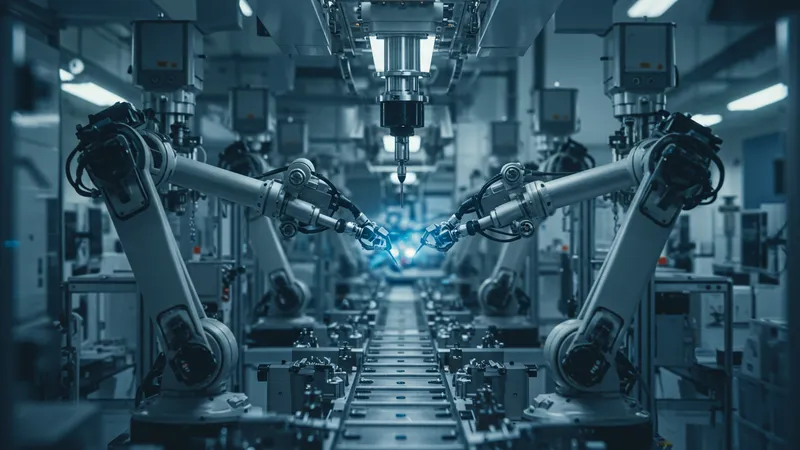
The question remains: How widespread can their adoption become? Look no further than the assembly lines of tech companies or the micro-precision fields of pharmaceuticals. These sectors are witnessing unprecedented transformations. Yet, as robots saturate these industries, the ripple effect on associated job roles can't be ignored.
But here’s a twist: automation is birthing new industries and opportunities! Companies now need logistics experts for robot shipments, AI specialists for training algorithms, and legal advisors to navigate robotic compliance. This newly emerging job market offers a silver lining, albeit requiring reskilling and adaptation at a large scale.
What's the future trajectory for ubiquitous automation? Speculate no more, for we’ll soon spotlight the symbiotic relationship between humans and robots. Stay tuned as we navigate these complex pathways, illustrating how co-existence might become the norm rather than the exception…
The narrative of robots replacing humans is only half the story. Reality paints a richer picture where cooperation between human skills and robotic precision offers the biggest potential. The future isn’t about replacement but about enhancing human capabilities.
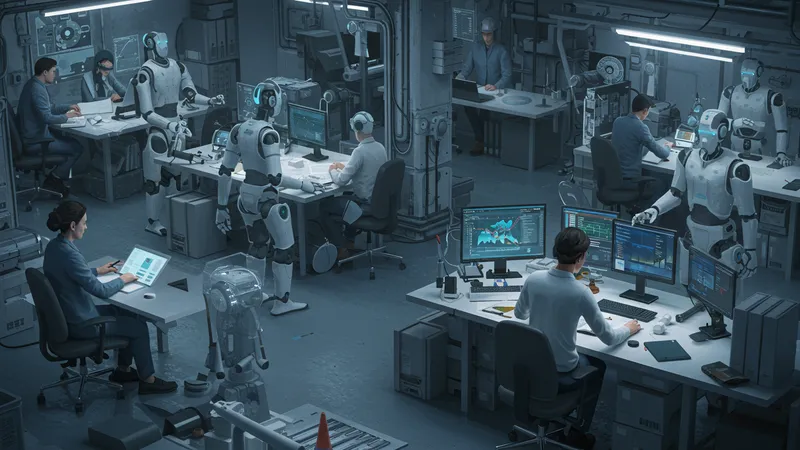
Industries are emerging where robots liberate people from mundane tasks, allowing for innovation and creativity that machines lack. Such collaborative environments are breeding grounds for revolutionary products and solutions, setting new benchmarks for productivity and innovation.
How does this symbiosis manifest? Consider manufacturing settings where humans design product lines, leaving machines to execute, and testing is done collaboratively. This integration leverages the distinctive abilities of both, crafting a fabric of productivity that is complex yet seamless.
Looking ahead, this partnership prompts exciting possibilities. Human oversight coupled with robotic efficiency could become mainstream. Yet, as promising as it sounds, achieving this balance requires strategic planning and robust education. Continue as we peer into case studies showcasing these successful integrations…
Across the globe, many industries have set benchmark examples of successful robot integration. Automotive giant Tesla, for instance, pairs human intuition with robotic precision on their assembly lines, enabling groundbreaking production speeds and complexities.
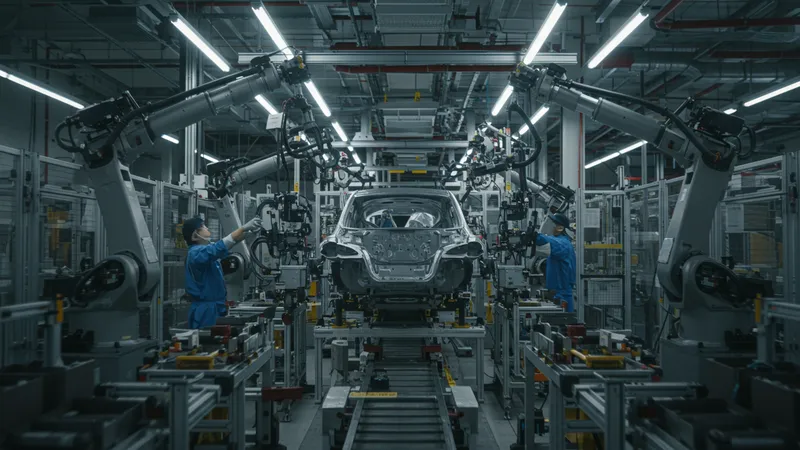
In the electronics sector, Samsung showcases a blend of human creativity with robotic precision, advancing production quality while keeping innovation high. These case studies reveal not just operational success but also highlight strategic planning and training effort orchestration to achieve synergy.
What can be learned from these pioneers? Their success is attributed to clear vision and gradual implementation, emphasizing employee training and adjustment alongside robotic deployment. This approach mitigates disruptions while fostering a habitat of innovation and efficiency.
These stories aren’t merely industrial milestones; they serve as blueprints for other sectors eyeing robotic assistance. As we close this segment, the most pressing question remains: Can this integration approach universally apply, or do unique challenges await varying sectors? The next revelation might surprise you…
Although robotic integration presents a promising horizon, unforeseen hurdles can impact implementation. For instance, initial costs and technical complexities pose significant barriers, particularly to smaller enterprises with limited capital.
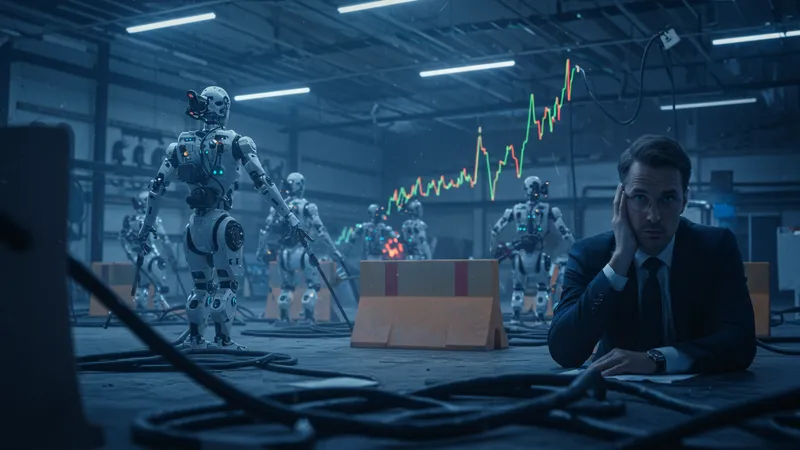
Moreover, the continuous evolution of technology entails constant updates, threatening long-term investments. Interestingly, frequent iterations don’t always yield better returns, causing a psychological barrier and apprehension among potential adopters.
Yet, a crucial hurdle remains societal acceptance. Skepticism around robots due to fears of redundancy and the unknown fosters resistance amongst workforces, slowing down adoption. Bridging this gap is a key challenge and requires tactical engagement from executives.
Understanding these hurdles prompts industries to rethink strategies, encouraging innovative approaches to address obstacles. As we delve into strategic solutions, remember, tackling these issues not only accelerates progress but refines the symbiosis between technology and human endeavors. Onward we go…
Strategizing for seamless integration and widespread adoption of articulated robots involves multiple facets. Foremost, embracing a phased approach allows organizations to tailor technological acquisitions to their unique contexts, avoiding detrimental disruptions.
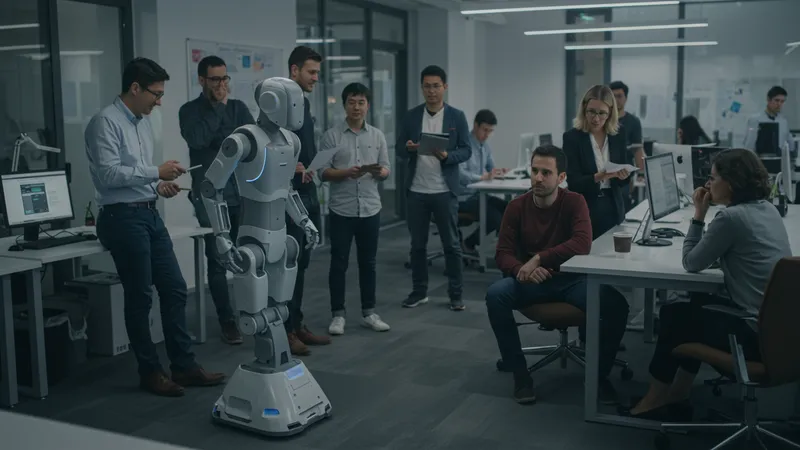
Education and continuous training act as catalysts, transforming initial employee resistance into enthusiasm and collaboration. By involving workforce in the process, organizations facilitate an organic growth and acceptance of robotic assistance.
On a corporate level, fostering collaborations with tech innovators can expedite the integration process, leveraging expertise from specialized fields. Such partnerships not only smoothen the transition but also unlock potentials yet unexplored.
In concluding this segment, these strategies highlight the pivotal role of human facilitation in robotic integration. They unveil not just a technological transformation narrative but an organizational evolution journey. What remains is the anticipated future where technological and human facets work harmoniously to achieve unprecedented successes. Continue onward as we explore these aspirations in greater depth...
Peering into the future, one envisages a harmonized vision where robotics and humans coexist, thriving on their mutual strengths. The journey towards this equilibrium demands careful orchestration but promises a landscape of unprecedented capabilities.
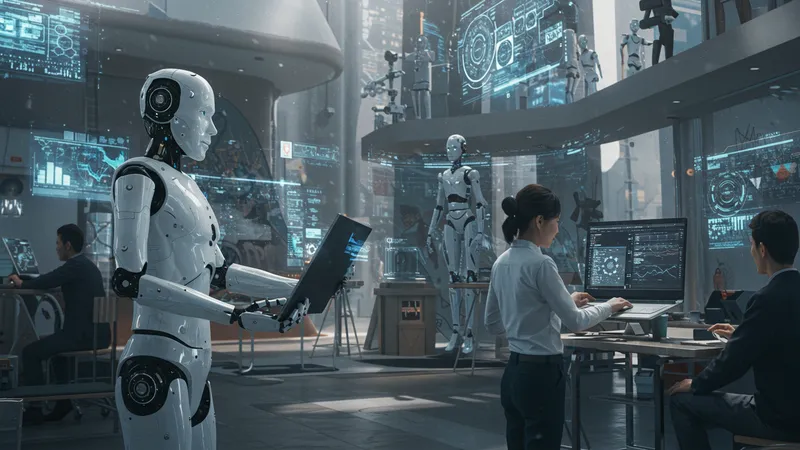
In this future, robots assist, learn, and grow alongside humans, fostering creative ingenuity and problem solving. Industries foresee a fusion of intelligence where robotic efficiency complements human innovation, propelling organizational growth to new heights.
However, this road to synergy is paved with numerous challenges—from ethical considerations to technological hurdles. Yet, it is the persistent pursuit of harmony and progress that will shape this future, transitioning industries into the next paradigm.
The final strides on this journey are imminent, and their culmination is bound to transform industries and economies on a global scale. Humanity's greatest endeavor—to integrate, adapt, and thrive with technology—is near its accomplished manifestation. The insights in the next section will encapsulate this journey, offering key takeaways for those on this path…
For those at the forefront of robotic adoption, several pivotal insights emerge. First, patience and a strategic framework are vital for successful integration, ensuring that technological benefits align with organizational goals.
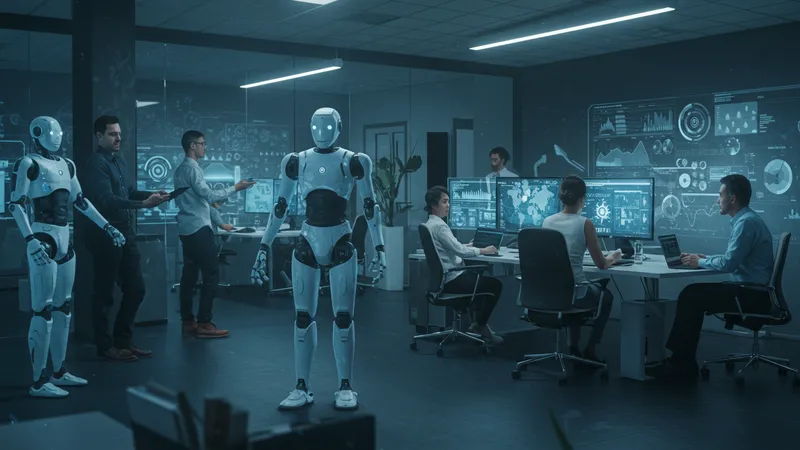
Equally important is fostering a culture of continuous learning within teams. By embracing technology and nurturing talent, organizations position themselves to capitalize on the fast-evolving landscape. Sustained success lies in this adaptability and foresight.
Beyond technical prowess, the integration of robots calls for ethos-driven leadership that prioritizes ethical adoption. This balance maintains corporate integrity, assuring stakeholders that technological evolution serves beyond mere productivity gains.
These takeaways serve as a beacon for navigating the robotic revolution. By integrating these principles, companies not only ensure operational success but they also champion progressiveness. The following segment will sum up this journey’s essence, offering a dramatic close and a call to action for all readers on this transformative path…
As you reach the article's end, consider this: the era of articulated robots isn't just transforming industries; it's redefining what work means for humanity. This movement urges businesses to rethink their strategies, employees to embrace change, and societies to adapt to a future where technology and human effort unite.
But the story does not end here. The potential of innovation is boundless, and understanding its trajectory could be integral for future success. Share this insight, bookmark this narrative, and dive deeper into how technology redefines possibilities—after all, knowledge is power, and the next revolution is already on the horizon.